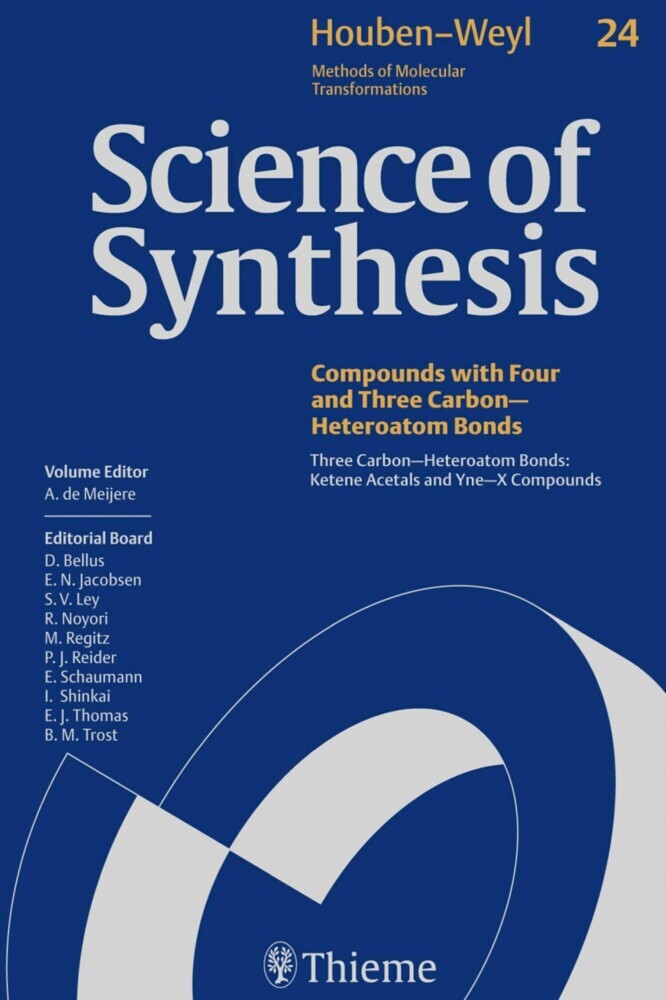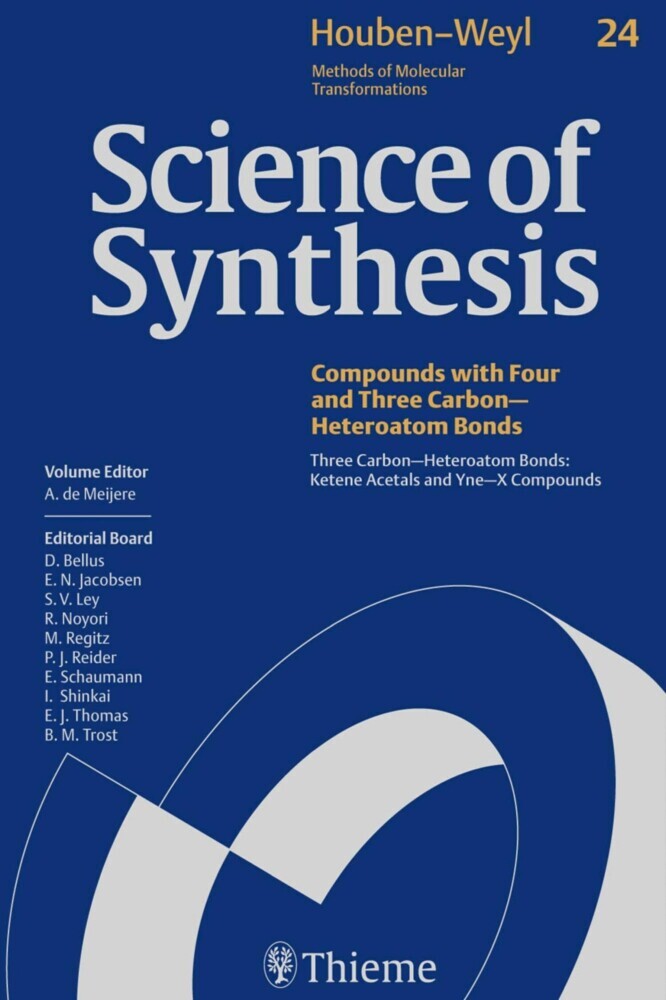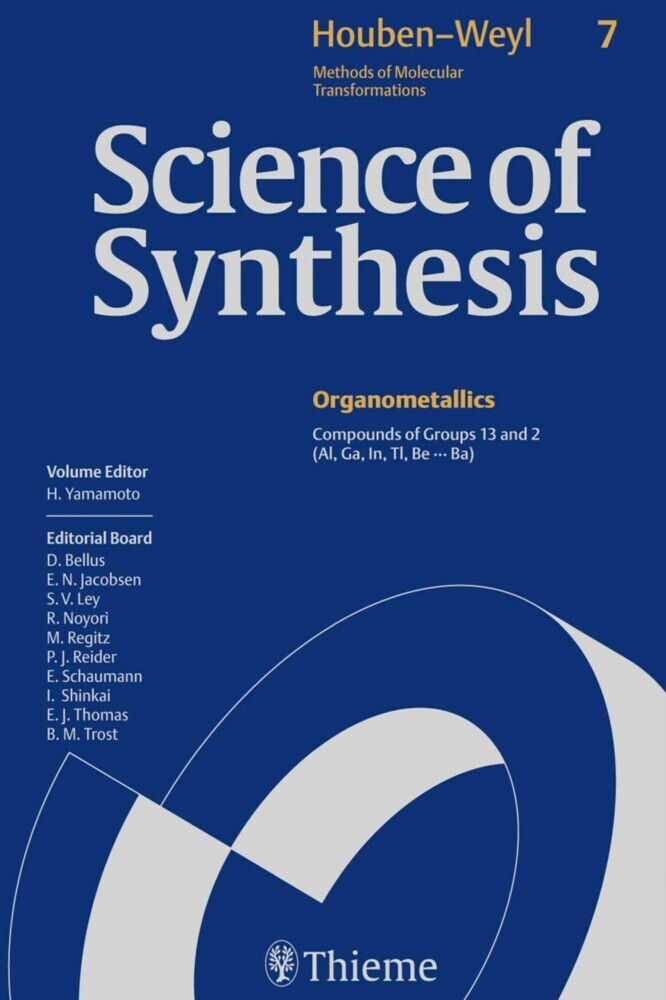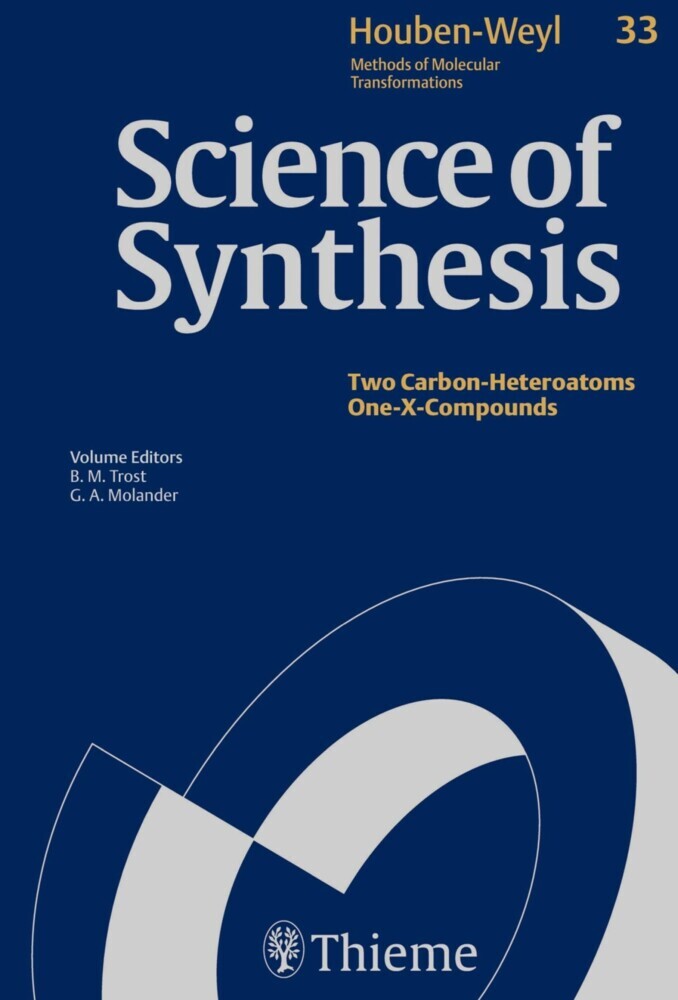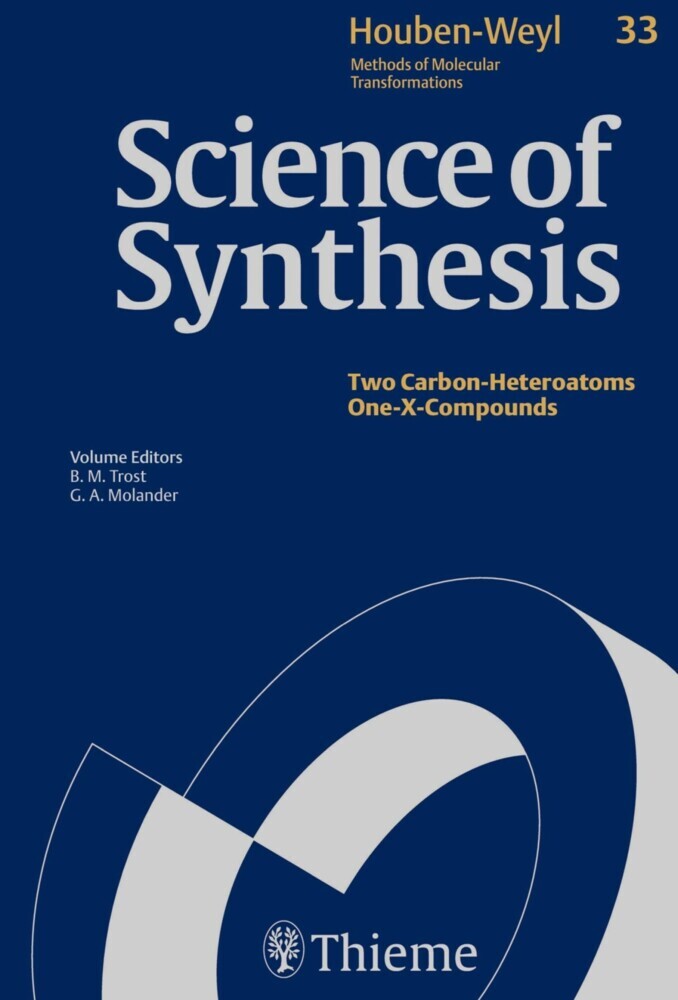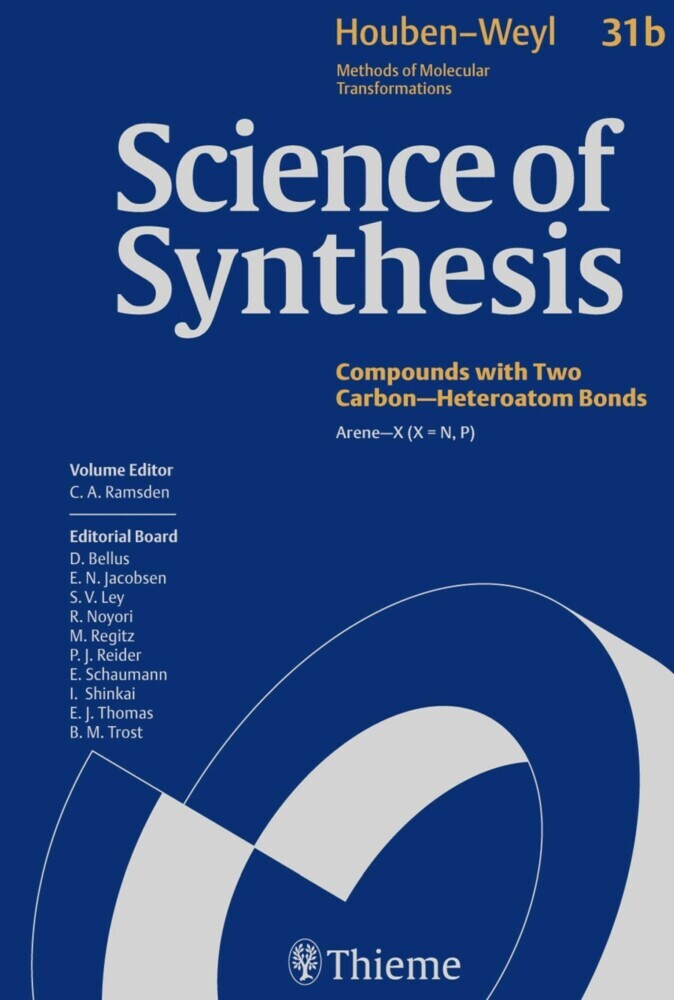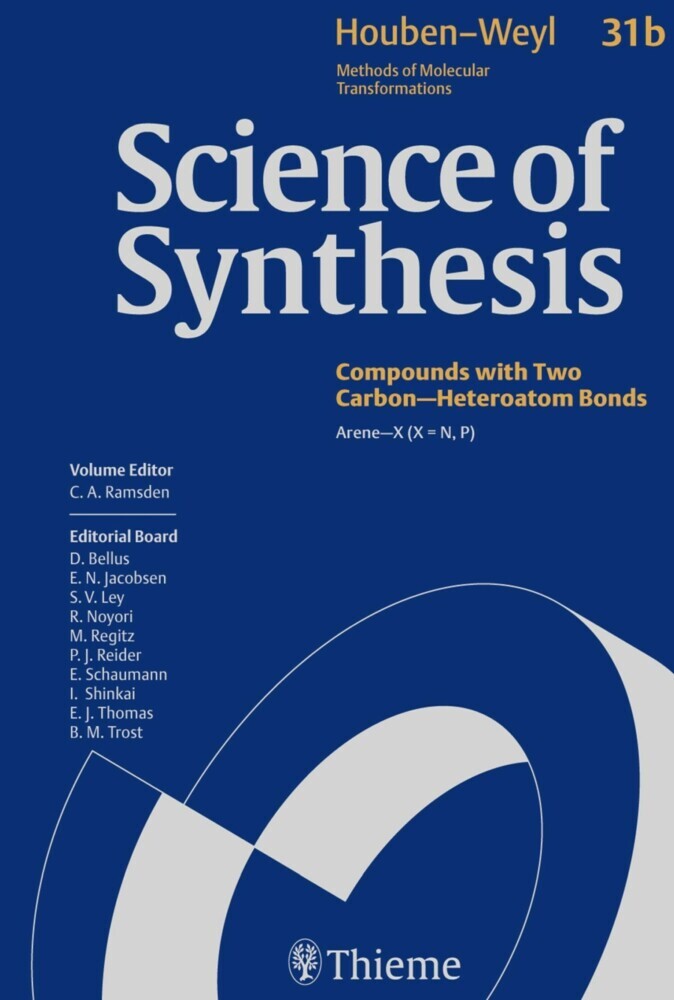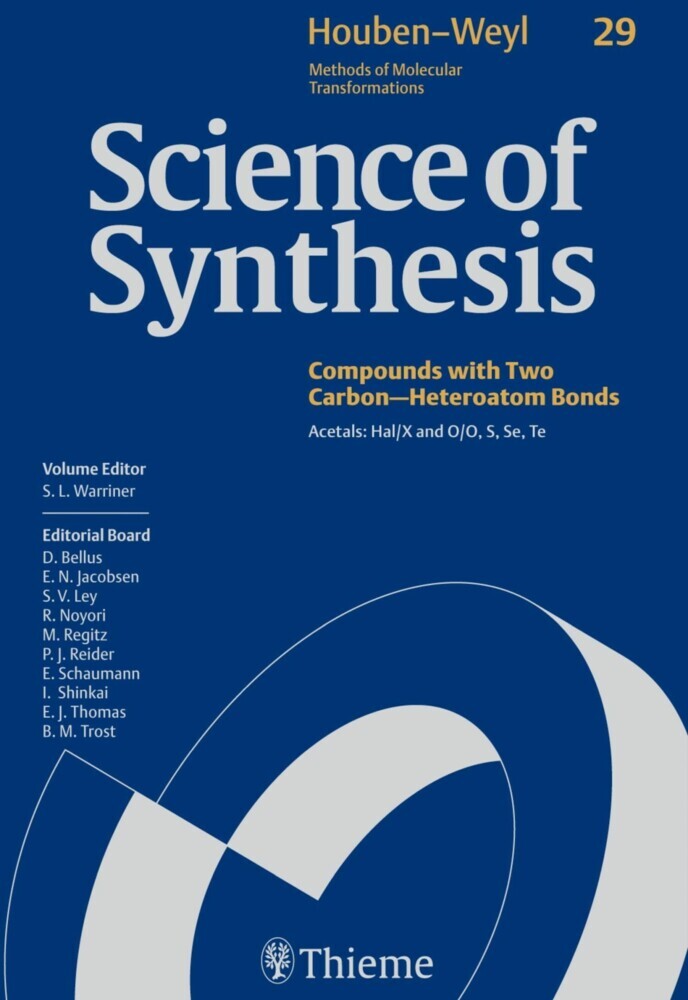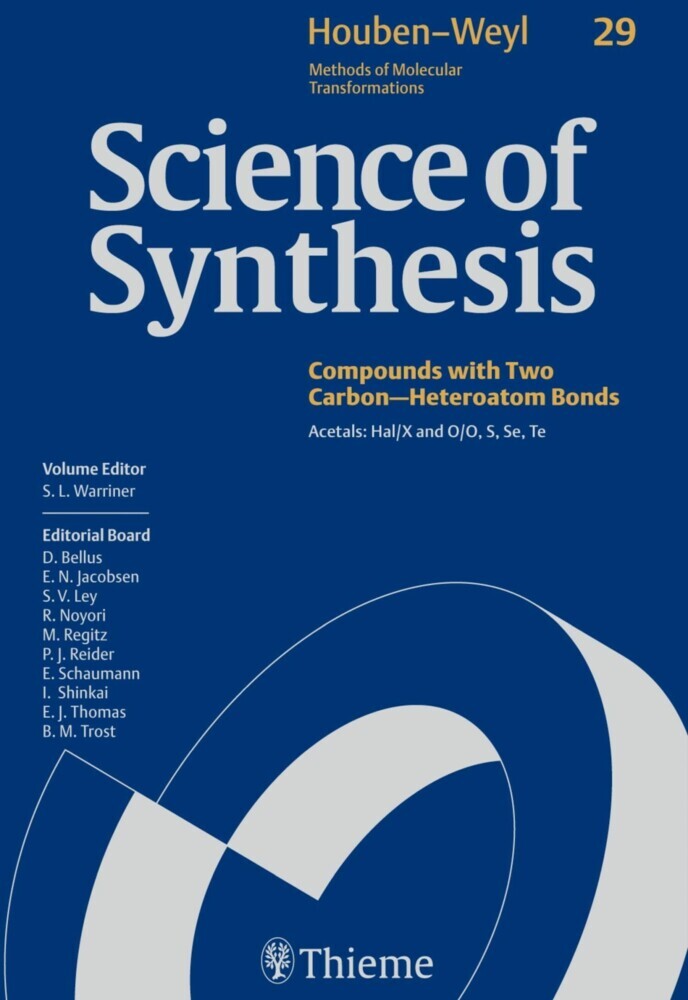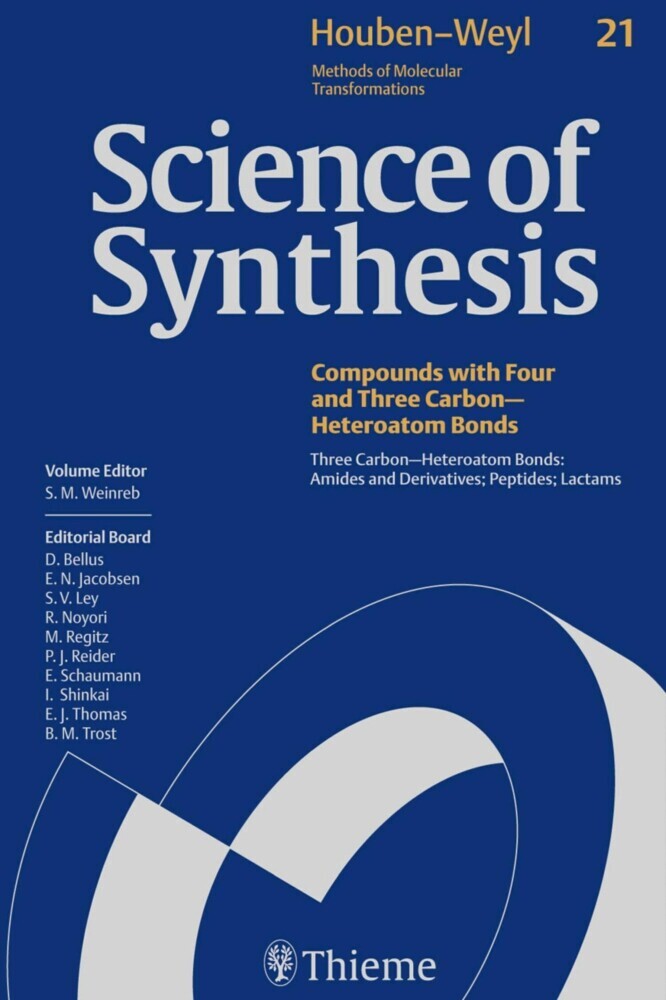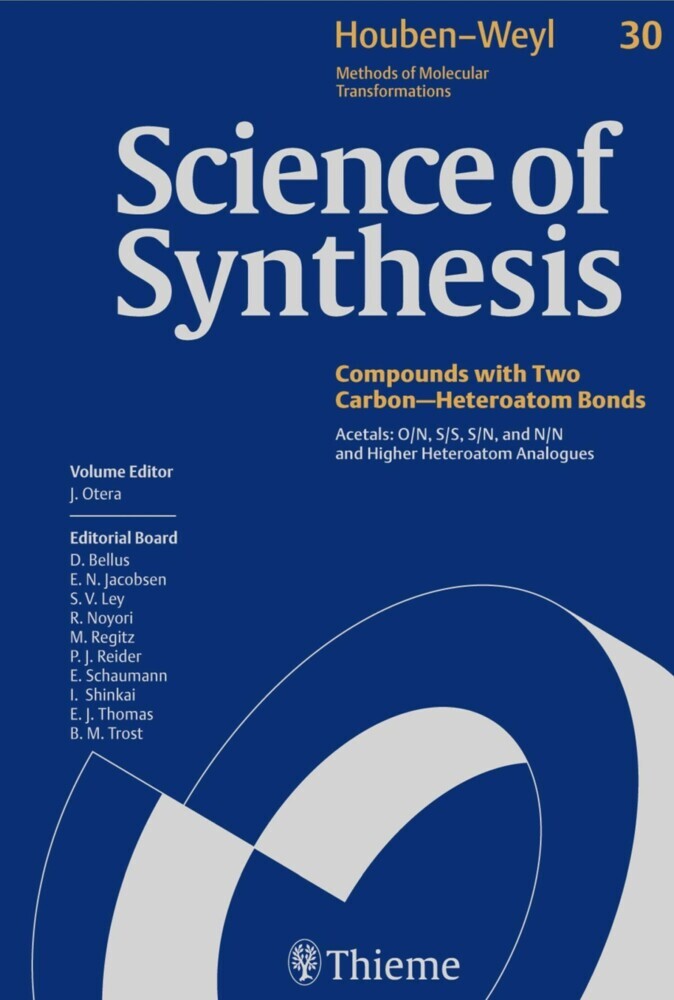Science of Synthesis: Houben-Weyl Methods of Molecular Transformations Vol. 24. Vol.24
Three Carbon-Heteroatom Bonds: Ketene Acetals and Yne-X Compounds
Science of Synthesis: Houben-Weyl Methods of Molecular Transformations Vol. 24. Vol.24
Three Carbon-Heteroatom Bonds: Ketene Acetals and Yne-X Compounds
Science of Synthesis: Houben-Weyl Methods of Molecular Transformations is the entirely new edition of the acclaimed reference series Houben-Weyl, the standard synthetic chemistry resource since 1909. This new edition is published in English and will comprise 48 volumes published between the years 2000 and 2008.
Science of Synthesis is a quality reference work developed by a highly esteemed editorial board to provide a comprehensive and critical selection of reliable organic and organometallic synthetic methods. This unique resource is designed to be the first point of reference when searching for a synthesis strategy.
- Contains the expertise of presently 400 leading chemists worldwide
- Critically evaluates the preparative applicability and significance of the synthetic methods
- Discusses relevant background information and provides detailed experimental procedures
For full information on the Science of Synthesis series, visit the Science of Synthesis Homepage.
1;Science of Synthesis - Volume 24: Three Carbon--Heteroatom Bonds: Ketene Acetals and Yne--X Compounds;1 1.1;Title page;3 1.2;Imprint;5 1.3;Preface;6 1.4;Volume Editor's Preface;8 1.5;Overview;10 1.6;Table of Contents;16 1.7;Introduction;56 1.8;24.1 Product Class 1: 1,1-Bis(heteroatom-functionalized) Allenes;72 1.8.1;24.1.1 Product Subclass 1: 1,1-Dihaloallenes;72 1.8.1.1;24.1.1.1 Synthesis of Product Subclass 1;72 1.8.1.1.1;24.1.1.1.1 Method 1: Synthesis from Allenes and Acetylenes by Substitution Reactions;73 1.8.1.1.1.1;24.1.1.1.1.1 Variation 1: Substitution of the Stannyl Group;73 1.8.1.1.1.2;24.1.1.1.1.2 Variation 2: From Acetylenes by Substitution Reactions;73 1.8.1.1.1.3;24.1.1.1.1.3 Variation 3: Via (gem-Difluoroallenyl)indium Derivatives;75 1.8.1.1.2;24.1.1.1.2 Method 2: Dehydrohalogenation of Dihalopropanes or Halopropenes;75 1.8.1.1.2.1;24.1.1.1.2.1 Variation 1: Direct Dehydrohalogenation;75 1.8.1.1.2.2;24.1.1.1.2.2 Variation 2: Dehydrochlorination through gem-Lithio,Halo-Substituted Carbenoid or Carbene Intermediates;78 1.8.1.1.3;24.1.1.1.3 Method 3: Synthesis by the Shapiro Reaction;79 1.8.1.1.4;24.1.1.1.4 Method 4: Dehalogenation of Fluoropropenes;79 1.8.1.1.4.1;24.1.1.1.4.1 Variation 1: Direct Dehalogenation of Fluoropropenes;79 1.8.1.1.4.2;24.1.1.1.4.2 Variation 2: Defluorosilylation of Silyl-Substituted Fluoropropenes;80 1.8.1.1.5;24.1.1.1.5 Method 5: Isomerization of Acetylenes, Cyclopropenes, or Methylenecyclopropanes;80 1.8.1.2;24.1.1.2 Applications of Product Subclass 1 in Organic Synthesis;81 1.8.1.2.1;24.1.1.2.1 Method 1: Addition of Nucleophilic and Electrophilic Reagents;82 1.8.1.2.1.1;24.1.1.2.1.1 Variation 1: 1,2-Addition to 1,1-Difluoroallenes;82 1.8.1.2.1.2;24.1.1.2.1.2 Variation 2: Nucleophilic Addition to 1,1-Dichloroallenes;83 1.8.1.2.1.3;24.1.1.2.1.3 Variation 3: Electrophilic Addition of Acyl Chlorides;83 1.8.1.2.1.4;24.1.1.2.1.4 Variation 4: Oxygenolytic Solvolysis of Polyiodoallenes;83 1.8.1.2.2;24.1.1.2.2 Method 2: [2 + 2] Cycloaddition;84 1.8.1.2.2.1;24.1.1.2.2.1 Variation 1: Dimerization;84 1.8.1.2.2.2;24.1.1.2.2.2 Variation 2: Allene--Alkene [2 + 2] Cycloaddition;85 1.8.1.2.2.3;24.1.1.2.2.3 Variation 3: Allene--Alkyne [2 + 2] Cycloaddition;86 1.8.1.2.3;24.1.1.2.3 Method 3: [2 + 3]-Dipolar Cycloaddition;86 1.8.1.2.4;24.1.1.2.4 Method 4: [2 + 4] Cycloaddition;87 1.8.1.2.5;24.1.1.2.5 Method 5: Metal Complexes;88 1.8.2;24.1.2 Product Subclass 2: 1-Halo-1-(organooxy)allenes;92 1.8.2.1;24.1.2.1 Synthesis of Product Subclass 2;92 1.8.2.1.1;24.1.2.1.1 Method 1: Halogenation of 1-Alkoxyallenes;92 1.8.3;24.1.3 Product Subclass 3: 1-Halo-1-(organochalcogeno)allenes and 1-Halo-1-(organochalcogeno)butatrienes;94 1.8.3.1;24.1.3.1 Synthesis of Product Subclass 3;94 1.8.3.1.1;24.1.3.1.1 Method 1: 1-Halo-1-(organochalcogeno)allenes by the Isomerization of 3-Halo-3-(organochalcogeno)alk-1-ynes with Base;94 1.8.3.1.2;24.1.3.1.2 Method 2: 1-Halo-1-(organochalcogeno)allenes by the Reaction of 1-Haloalk-1-yn-3-ols with Sulfur Compounds, and Subsequent Rearrangement;95 1.8.3.1.3;24.1.3.1.3 Method 3: 1-Halo-1-(organochalcogeno)butatrienes by Dehydrochlorination of 1,2-Dichloro-1-(organochalcogeno)buta-1,3-dienes;96 1.8.4;24.1.4 Product Subclass 4: 1-Nitrogen-Functionalized 1-Haloallenes;98 1.8.4.1;24.1.4.1 Synthesis of Product Subclass 4;98 1.8.4.1.1;24.1.4.1.1 Method 1: Halogenation of an Allene-1,1,3-triamine;98 1.8.5;24.1.5 Product Subclass 5: 1-Phosphorus-Functionalized 1-Haloallenes;100 1.8.5.1;24.1.5.1 Synthesis of Product Subclass 5;100 1.8.5.1.1;24.1.5.1.1 Method 1: Reaction of 1-Haloalk-1-yn-3-ols with Phosphorus Compounds, and Subsequent Rearrangement;100 1.8.5.2;24.1.5.2 Applications of Product Subclass 5 in Organic Synthesis;101 1.8.5.2.1;24.1.5.2.1 Method 1: Palladium-Catalyzed Cross Coupling;101 1.8.6;24.1.6 Product Subclass 6: 1,1-Bis(organooxy)allenes, 1,1-Bis(organooxy)butatrienes, 1-(Organooxy)-1-siloxyallenes, and 1-(Organooxy)allen-1-olates;104 1
| ISBN | 9783131719812 |
|---|---|
| Article number | 9783131719812 |
| Media type | eBook - PDF |
| Copyright year | 2014 |
| Publisher | Georg Thieme Verlag KG |
| Length | 1249 pages |
| Language | English |
| Copy protection | Digital watermarking |

